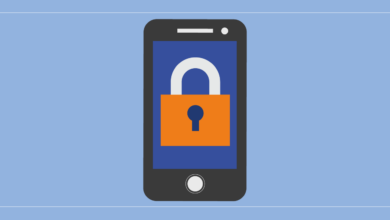
Tennis and Cybersecurity Avoiding Unforced Errors
Tennis and cybersecurity avoiding unforced errors – Tennis and Cybersecurity: Avoiding Unforced Errors – that’s a pretty interesting pairing, right? Think about it: the strategic planning of a tennis match mirrors the careful approach needed for robust cybersecurity. Just like a double fault can cost you a point, a simple mistake in your online security can lead to a major breach. This post dives into the surprising parallels between these two seemingly unrelated worlds, exploring how understanding the principles of one can dramatically improve your game in the other.
We’ll uncover practical strategies to avoid those costly “unforced errors” in both tennis and the digital realm.
We’ll explore how anticipating your opponent’s moves in tennis is similar to identifying vulnerabilities in your systems. We’ll even look at how common tennis errors, like net errors and double faults, have direct cybersecurity equivalents like phishing attacks and weak passwords. Get ready to level up your security game!
The Analogy

The strategic thinking required for success in tennis shares a surprising number of parallels with the proactive measures needed for robust cybersecurity. In both arenas, anticipating your opponent’s moves, understanding your own weaknesses, and executing a well-defined plan are crucial for avoiding costly mistakes. Just as a tennis player needs to carefully consider their shot selection to maximize their chances of winning a point, a cybersecurity professional must strategically deploy defenses to minimize the risk of a breach.
Strategic Shot Selection and Proactive Cybersecurity Measures
In tennis, a player doesn’t simply hit the ball; they assess the court, their opponent’s position, and their own strengths before choosing a shot. Similarly, a strong cybersecurity strategy isn’t about simply installing software; it’s about understanding potential threats, identifying vulnerabilities, and deploying a layered defense system that addresses those specific risks. A well-placed drop shot in tennis, for example, can be analogous to implementing multi-factor authentication – a targeted maneuver designed to exploit a weakness in the opponent’s (or attacker’s) game.
Forced Errors in Tennis and Exploited Vulnerabilities
A “forced error” in tennis occurs when a player is compelled to make a mistake due to their opponent’s skillful play. This mirrors a cybersecurity breach where a vulnerability is exploited by an attacker. For instance, a powerful serve forcing a weak return is similar to a phishing attack successfully exploiting a user’s lack of awareness about email security best practices.
The attacker forces a mistake by leveraging a known vulnerability in human behavior. Similarly, a perfectly placed lob forcing a player to stretch and miss is akin to a sophisticated malware attack exploiting a zero-day vulnerability in a software system.
Risk Assessment in Tennis and Vulnerability Identification
A skilled tennis player constantly assesses risk. They anticipate their opponent’s likely shots, considering their playing style and current position on the court. This is directly comparable to vulnerability identification in cybersecurity. Regular security audits, penetration testing, and threat modeling are all methods used to identify potential weaknesses in a system before an attacker can exploit them. By proactively identifying these vulnerabilities, organizations can implement mitigating controls, much like a tennis player adjusts their position and strategy to counter their opponent’s strengths.
Comparison of Tennis Errors and Cybersecurity Equivalents
The following table illustrates the parallels between common tennis errors and their cybersecurity counterparts:
| Tennis Error | Cybersecurity Equivalent | Description | Mitigation |
|---|---|---|---|
| Double Fault | Weak Password/Reused Password | Two consecutive service faults resulting in a point loss. | Strong, unique passwords; password managers. |
| Net Error | Phishing Attack | Hitting the ball into the net. | Security awareness training; email filtering. |
| Foot Fault | Insider Threat | Stepping over the baseline before serving. | Access control; background checks; employee training. |
| Unforced Error | Software Vulnerability | A mistake not caused by opponent’s actions. | Regular patching and updates; vulnerability scanning. |
The Role of Technology in Preventing Cyber “Unforced Errors”: Tennis And Cybersecurity Avoiding Unforced Errors
Just as a tennis player uses technique and strategy to minimize unforced errors, organizations can leverage technology to significantly reduce their vulnerability to cyberattacks. A robust cybersecurity strategy isn’t just about reacting to breaches; it’s about proactively preventing them through the implementation and maintenance of various security technologies. These technologies act as a layered defense, much like a skilled player uses different shots to control the point.
Firewall Implementation and Configuration
Firewalls are the first line of defense, acting as gatekeepers that control network traffic. They examine incoming and outgoing data packets, blocking those that don’t meet pre-defined security rules. Effective firewall configuration involves carefully defining access control lists (ACLs), specifying which ports and protocols are allowed or denied. For instance, blocking unnecessary ports like those used by outdated services minimizes potential entry points for attackers.
Regular updates are crucial to ensure the firewall remains effective against the latest threats. A poorly configured firewall, however, can leave significant vulnerabilities, akin to a tennis player with a weak serve.
Intrusion Detection and Prevention Systems
Intrusion Detection Systems (IDS) and Intrusion Prevention Systems (IPS) monitor network traffic for malicious activity. IDS passively monitors and alerts administrators to suspicious behavior, while IPS actively blocks or mitigates threats. Both systems rely on signature-based detection (identifying known malware) and anomaly-based detection (identifying deviations from normal network behavior). A well-configured IPS, for example, can prevent a known exploit from successfully compromising a system, much like a tennis player anticipates and neutralizes an opponent’s attack.
The effectiveness of these systems depends on the accuracy of their signature databases and the ability of the system to correctly identify anomalies.
Antivirus and Anti-malware Software
Antivirus and anti-malware software provide a crucial layer of protection at the endpoint level (individual computers and devices). These programs scan files and processes for malicious code, preventing infections and removing existing threats. Regular updates are essential to ensure the software can detect the latest malware variants. Furthermore, employing multiple layers of anti-malware solutions, such as a combination of signature-based and heuristic-based scanners, can significantly enhance protection.
This is analogous to a tennis player using different strategies to win a match. However, relying solely on antivirus software is insufficient; it’s a component of a broader security strategy.
Security Information and Event Management (SIEM) Systems
SIEM systems collect and analyze security logs from various sources, providing a centralized view of security events across an organization’s infrastructure. This allows security teams to identify patterns, detect threats, and respond quickly to incidents. A well-configured SIEM system can correlate events from different sources, enabling the detection of sophisticated attacks that might otherwise go unnoticed. For instance, a SIEM system might detect unusual login attempts from multiple locations, indicating a potential brute-force attack.
This proactive monitoring helps to minimize damage and improve response times.
Best Practices for Configuring and Maintaining Security Technologies
The effectiveness of security technologies depends heavily on proper configuration and maintenance. This includes:
- Regular updates of all software and firmware.
- Strong password policies and multi-factor authentication (MFA).
- Regular security audits and vulnerability assessments.
- Employee security awareness training.
- Incident response planning and regular drills.
These practices ensure that security systems are always up-to-date and configured optimally to prevent cyber “unforced errors”.
Security Audits and Penetration Testing, Tennis and cybersecurity avoiding unforced errors
Regular security audits and penetration testing are crucial for identifying and addressing potential weaknesses before they can be exploited by attackers. Security audits involve a systematic review of an organization’s security controls, identifying gaps and vulnerabilities. Penetration testing, on the other hand, simulates real-world attacks to assess the effectiveness of security controls. Both methods are essential for proactively strengthening an organization’s security posture, much like a tennis coach helps a player identify weaknesses in their game and develop strategies to improve.
The results of these assessments should be used to prioritize remediation efforts and improve the overall security of the system.
Building a Robust Cybersecurity “Game Plan”

Just like a top tennis player needs a strategic game plan to win a match, organizations need a comprehensive cybersecurity strategy to protect themselves from cyberattacks. A well-defined plan isn’t just about reacting to threats; it’s about proactively mitigating risks and ensuring business continuity. Failing to develop a robust strategy is like stepping onto the court without a racket – you’re setting yourself up for failure.Developing a tailored cybersecurity strategy is crucial because a one-size-fits-all approach simply won’t work.
Every organization has unique vulnerabilities and assets that require specific protection measures. A small business will have different needs than a multinational corporation, and a healthcare provider’s security requirements will differ significantly from those of a retail company. Ignoring these nuances leaves organizations exposed to attacks that could have been prevented with a more targeted approach.
Creating a Cybersecurity Policy: A Step-by-Step Process
A robust cybersecurity policy is the cornerstone of any effective cybersecurity program. It provides a framework for all security-related activities, outlining roles, responsibilities, and procedures. Creating this policy should be a collaborative effort, involving IT professionals, legal counsel, and senior management.
- Risk Assessment: Identify and assess potential threats and vulnerabilities. This involves analyzing your systems, data, and processes to determine what could go wrong and the potential impact.
- Policy Development: Based on the risk assessment, create a comprehensive policy that addresses areas like access control, data protection, incident response, and acceptable use of company resources. This should be clearly written and easily understandable for all employees.
- Implementation: Put the policy into action. This involves training employees, implementing security technologies, and establishing procedures for managing security incidents.
- Monitoring and Review: Regularly monitor the effectiveness of the policy and make updates as needed. The threat landscape is constantly evolving, so your policy must adapt to stay relevant.
- Enforcement: Establish consequences for non-compliance. This is crucial to ensure that the policy is taken seriously and followed by all employees.
Effective Cybersecurity Incident Response Plans
Having a well-defined incident response plan is crucial for minimizing the impact of a successful cyberattack. This plan should Artikel clear steps to be taken in the event of a security breach, including identifying the incident, containing the damage, eradicating the threat, recovering from the attack, and learning from the experience.For example, a plan might include procedures for isolating infected systems, notifying relevant authorities (like law enforcement or data protection agencies), communicating with affected parties, and restoring data from backups.
Regular testing and drills are vital to ensure the plan’s effectiveness and that all personnel are familiar with their roles and responsibilities. A recent example of a company with a well-regarded incident response plan is Microsoft, which frequently shares details of its response to sophisticated attacks, highlighting the value of preparation and swift action.
Key Performance Indicators (KPIs) for Cybersecurity Programs
Measuring the effectiveness of your cybersecurity program is essential to identify areas for improvement and demonstrate the value of your security investments. Key performance indicators (KPIs) provide quantifiable metrics to track progress and identify weaknesses.
- Mean Time To Detect (MTTD): The average time it takes to identify a security incident.
- Mean Time To Respond (MTTR): The average time it takes to resolve a security incident.
- Number of Security Incidents: The total number of security incidents detected over a specific period.
- Percentage of Vulnerabilities Remediated: The percentage of identified vulnerabilities that have been patched or otherwise addressed.
- Employee Security Awareness Training Completion Rate: The percentage of employees who have completed security awareness training.
- Phishing Simulation Success Rate: The percentage of employees who successfully identify and report phishing attempts in simulated scenarios.
The Impact of Human Factors in Cybersecurity Breaches

Human error remains a significant vulnerability in even the most robust cybersecurity systems. While technology plays a crucial role in preventing breaches, the human element—through negligence, susceptibility to social engineering, or malicious insider actions—often proves to be the weakest link. Understanding and mitigating these human factors is paramount to building a truly secure digital environment.Negligence, social engineering tactics, and insider threats are three major categories of human-related cybersecurity incidents.
These often overlap, with negligence creating opportunities exploited by social engineering or enabling insider threats to flourish. Addressing these requires a multi-pronged approach encompassing technical safeguards, security awareness training, and a strong security culture.
Negligence and its Mitigation
Negligence encompasses a broad range of behaviors, from failing to update software and using weak passwords to clicking on malicious links in emails. These seemingly small oversights can have catastrophic consequences. Mitigation strategies include implementing strong password policies, enforcing multi-factor authentication (MFA), deploying automated patching systems, and providing regular security awareness training that emphasizes the real-world consequences of negligent behavior.
Regular security audits and vulnerability assessments can also identify and address potential weaknesses before they’re exploited.
Social Engineering and Defensive Measures
Social engineering attacks manipulate individuals into divulging sensitive information or performing actions that compromise security. Phishing emails, pretexting, and baiting are common techniques. Effective countermeasures involve comprehensive security awareness training that teaches employees to identify and report suspicious emails, websites, and phone calls. Implementing robust email filtering and anti-phishing technologies also helps reduce the success rate of these attacks.
Regular simulated phishing campaigns can assess employee awareness and reinforce training effectiveness.
Insider Threats and Risk Reduction
Insider threats encompass malicious or negligent actions by employees, contractors, or other individuals with legitimate access to an organization’s systems. This could range from stealing data to inadvertently exposing sensitive information. Mitigating this risk involves thorough background checks for employees and contractors, implementing access control policies based on the principle of least privilege, and regularly monitoring user activity for suspicious behavior.
Robust data loss prevention (DLP) tools can also help prevent sensitive information from leaving the organization’s control. A strong ethical code and clear consequences for security violations are essential deterrents.
Fostering a Security-Conscious Culture
A security-conscious culture is the bedrock of a strong cybersecurity posture. This involves embedding security awareness into every aspect of the organization’s operations. Regular security training, clear communication about security policies, and a culture of reporting security incidents without fear of retribution are crucial. Regular security awareness campaigns, gamified training modules, and interactive workshops can significantly enhance employee engagement and knowledge.
Leadership buy-in and visible support for security initiatives are also essential for creating a lasting security-conscious culture.
Hypothetical Phishing Attack and Prevention
A successful phishing attack scenario involves an email appearing to be from the CEO, requesting an urgent wire transfer to a vendor. The email contains convincing details and a sense of urgency. An employee, lacking sufficient awareness training, clicks the link and enters their credentials on a fake login page. The attacker gains access to the company’s banking systems and executes the fraudulent transfer. Prevention would involve: Implementing robust email authentication protocols like DMARC, SPF, and DKIM; providing employees with phishing awareness training, including examples of sophisticated attacks; employing multi-factor authentication for all financial transactions; and regular security awareness training with simulated phishing exercises. Finally, a strong reporting mechanism should be in place to enable employees to report suspicious emails without fear of reprisal.
Wrap-Up
So, whether you’re serving aces on the court or protecting your data online, remember that strategic planning and proactive measures are key. By understanding the parallels between tennis and cybersecurity, and by focusing on preventing those avoidable mistakes – the unforced errors – you can significantly improve your performance in both areas. Think of it as building a strong, well-rounded game plan that anticipates potential threats and minimizes damage.
It’s all about smart moves and a proactive approach – both on and off the court.
Helpful Answers
What’s the biggest unforced error in cybersecurity?
Many would argue it’s human error. Things like clicking on phishing links or using weak passwords account for a huge percentage of breaches.
How can I improve my password security?
Use a password manager, create strong, unique passwords for each account, and enable two-factor authentication whenever possible.
What’s a good way to spot a phishing email?
Look for grammatical errors, suspicious links, urgent requests for personal information, and emails from unknown senders. If something feels off, don’t click!
What’s the role of employee training in cybersecurity?
Employee training is crucial! Educated employees are less likely to fall victim to phishing scams and other social engineering attacks, forming the first line of defense.





